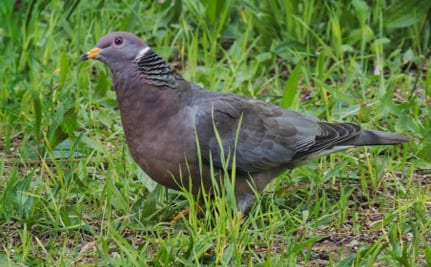
by Pigeon Patrol | Feb 6, 2023 | MBCA, pet bird, Pigeon Control, Pigeon Droppings, Pigeon Patrol's Services, Pigeon Predators
A raving lunatic beheaded two pigeons in Bryant Park, proclaimed he was a “vampire” — and guzzled their blood in front of a horrified crowd, witnesses told The Post.
“He was holding up the pigeons and drinking their blood, letting the blood drip down his shirt,” recalled shocked onlooker Dominic D.
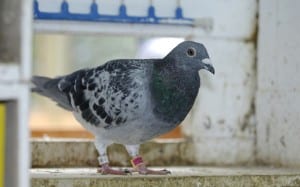
“He did it twice,” the 32-year-old said. “He was covered in blood. He said he was a vampire. It was pretty disgusting.”
Witnesses told The Post that the man threw one of the dead bird heads and splattered blood all over the shirt of a person who was eating lunch. He then calmly waited for cops to arrive.
“He was very calm when the police came,” explained Clarissa Plair, a 26-year-old Theology student who spends a lot of time in Bryant Park and has seen the pigeon perp before.
“He’s always here, yelling at people on the street,” she said. “He was telling [police] he’s a vampire.”
Authorities took a man into custody about 15 minutes later and transported him to St. Luke’s-Roosevelt Hospital for a pysch evaluation, according to officials.
Photos and video posted on Twitter showed the bloody aftermath, with several pigeons swooping in to mourn their fallen bird brethren.
While the man behind the fowl fatalities is known to sit in the Bryant Park fountain drinking beer, witnesses said he’s never gone after any of his feathered friends before.
Source
Pigeon Patrol Products & Services is the leading manufacturer and distributor or bird deterrent (control) products in Canada. Pigeon Patrol products have solved pest bird problems in industrial, commercial, and residential settings since 2000, by using safe and humane bird
deterrents with only bird and animal friendly solutions. At Pigeon Patrol, we manufacture and offer a variety of bird deterrents, ranging from Ultra-flex Bird Spikes with UV protection, Bird Netting, 4-S Bird Gel and the best Ultrasonic and audible sound devices on the market today.
Voted Best Canadian wholesaler for Bird Deterrent products ten years in a row.
Contact us at 1 877-4-NO-BIRD,(604) 585-9279 or visit our website at www.pigeonpatrol.ca
Pigeon/Pigeon Patrol / Pigeons Roosing / Vancouver Pigeon Control / Bird Spikes / Bird Control / Bird Deterrent / PIgeon Deterrent / Surrey Pigeon Control / Pest / Seagull deterrent / Vancouver Pigeon Blog / Birds Inside Home / Pigeons in the cities / Ice Pigeons / What to do about pigeons / sparrows, Damage by Sparrows, How to Keep Raccoons Away, Why Are Raccoons Considered Pests / De-fence / Pigeon Nesting / Bird Droppings / Pigeon Dropping / woodpecker control / Professional Bird Control Company / Keep The Birds Away / Birds/rats/seagull/pigeon/woodpecker/dove/sparrow/pidgeon control/pidgeon problem/pidgeon control/flying rats/pigeon problems/ bird netting/bird gel/bird spray/bird nails/bird guard
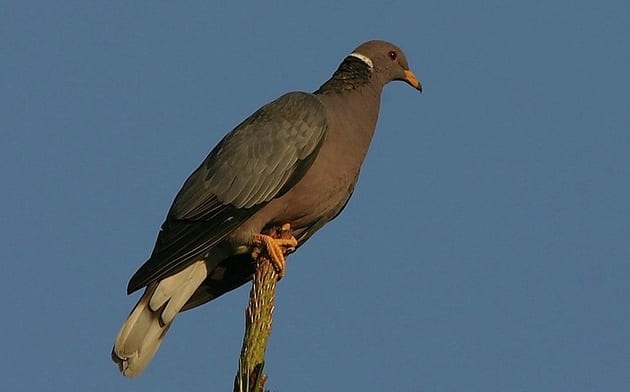
by Pigeon Patrol | Feb 6, 2023 | history of pigeons, MBCA, pet bird, Pigeon Control, Pigeon Droppings, Pigeon Patrol's Services
FERAL PIGEONS, WHICH LIVE ON every continent in the world except Antartica, are famously adaptable—They shack up all over, from San Francisco to London to Mumbai.
They are also in Calgary, where around 200 of them have made their home on the roof of the South Health Campus, a 269-bed hospital. This was an unwelcome development, since pigeons can carry disease, and they poop a lot.
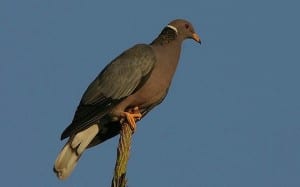
The hospital’s efforts to get rid of them—including with noise, which worked at first, before the birds got used to it—haven’t been successful, so recently they chose to get a little more serious. They’ve hired three baby peregrine falcons, according to the CBC, as a future anti-pigeon patrol.
A falconer, John Campbell, plans to release the falcons from the building, where it is hoped they will hunt down the pigeons and “other small game,” the CBC reports.
“You could [use] anything that would scare them, that would go after them as prey,” Campbell said. “It doesn’t have to be falcons but the falcons work very well.”
It will be a little time before the falcons get to the hunting, as just one has fledged so far. In the meantime, though, they’re being fed dead pigeons to give them a taste for pigeon blood.
Source
Pigeon Patrol Products & Services is the leading manufacturer and distributor or bird deterrent (control) products in Canada. Pigeon Patrol products have solved pest bird problems in industrial, commercial, and residential settings since 2000, by using safe and humane bird
deterrents with only bird and animal friendly solutions. At Pigeon Patrol, we manufacture and offer a variety of bird deterrents, ranging from Ultra-flex Bird Spikes with UV protection, Bird Netting, 4-S Bird Gel and the best Ultrasonic and audible sound devices on the market today.
Voted Best Canadian wholesaler for Bird Deterrent products ten years in a row.
Contact us at 1 877-4-NO-BIRD,(604) 585-9279 or visit our website at www.pigeonpatrol.ca
Pigeon/Pigeon Patrol / Pigeons Roosing / Vancouver Pigeon Control / Bird Spikes / Bird Control / Bird Deterrent / PIgeon Deterrent / Surrey Pigeon Control / Pest / Seagull deterrent / Vancouver Pigeon Blog / Birds Inside Home / Pigeons in the cities / Ice Pigeons / What to do about pigeons / sparrows, Damage by Sparrows, How to Keep Raccoons Away, Why Are Raccoons Considered Pests / De-fence / Pigeon Nesting / Bird Droppings / Pigeon Dropping / woodpecker control / Professional Bird Control Company / Keep The Birds Away / Birds/rats/seagull/pigeon/woodpecker/dove/sparrow/pidgeon control/pidgeon problem/pidgeon control/flying rats/pigeon problems/ bird netting/bird gel/bird spray/bird nails/bird guard
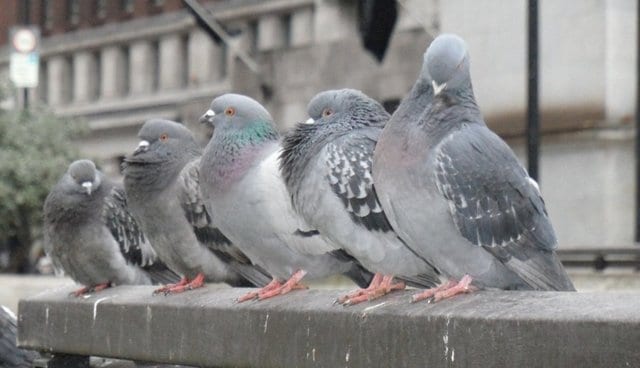
by Pigeon Patrol | Jan 19, 2023 | history of pigeons, MBCA, pet bird, Pigeon Control, Pigeon Droppings, Pigeon Patrol's Services, Pigeon Predators, Pigeon Spikes
Fancy a pigeon as a pet? They’re about to be legal again in the District of North Vancouver.
District council members voted 5-0 Monday night in favour of new bylaw governing domestic pigeons. It caps off a controversial two-year chapter for council, which originally voted to ban the pet birds in 2019.
Soon after, it came to light that Coun. Betty Forbes had lobbied Couns. Lisa Muri and Megan Curren behind the scenes to introduce the ban after years of complaints about her neighbour’s flock of pet pigeons.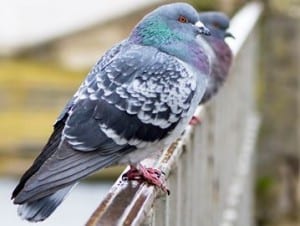
In February 2020, former information and privacy commissioner David Loukidelis released his report into the matter following an independent review. Among other things, he recommended that council shore up their training in ethics and oversight.
Council rescinded the ban last fall and sought to replace it with a modernized version of the district’s original bylaw dating back to 1971. The new bylaw passed Monday night limits the number of backyard squabs to 20 and governs the minimum size and setbacks for their roosts. It also makes enforcement easier for bylaw staff.
Coun. Jordan Back, one of the two council members who opposed the prohibition bylaw, said he was glad to see things largely put back to the way they were.
“This has certainly been a long and very costly process – something that never should have been brought forward in the first place. We were never dealing with a community concern,” he said.
Despite the independent investigation and now abandoned lawsuits, Coun. Mathew Bond said he feels the community is still owed some accountability for the whole “frivolous” process.
“I think that leaving those issues unresolved over the long term is detrimental to the integrity of this council,” he said.
When council held a special meeting on the matter last week, only three members of the community spoke out: two who argued pigeons are a threat to public health and one who said she had no problem’s living next to her own neighbour’s flock.
Mayor Mike Little said his view that pet pigeons are better suited to more rural communities had not changed, but he also found the public health arguments “spurious at best.”
“I think it’s fair to say that this is a pragmatic solution to the problem at hand,” he said.
Similarly, Curren said she has the same perspective on animal rights now as she did when she voted in favour of the prohibition.
“But I am opposed to the process, and I advocated for this bylaw to be brought back to a public process in since Nov. of 2019,” she said, noting that council did “fall short” of the district’s code of ethics. “When we have an opportunity to listen and to learn and to do better, then we need to do that.”
Coun. Jim Hanson, who also originally voted in favour of the ban, said with only two or three known pigeon fanciers in the district, the issue wasn’t worth any more of council’s time.
“If the keeping of pigeons becomes a community issue justifying further involvement, no doubt we will hear about that,” he said.
Muri and Forbes both recused themselves from the discussion and vote.
Source
Pigeon Patrol Products & Services is the leading manufacturer and distributor or bird deterrent (control) products in Canada. Pigeon Patrol products have solved pest bird problems in industrial, commercial, and residential settings since 2000, by using safe and humane bird deterrents with only bird and animal friendly solutions. At Pigeon Patrol, we manufacture and offer a variety of bird deterrents, ranging from Ultra-flex Bird Spikes with UV protection, Bird Netting, 4-S Bird Gel and the best Ultrasonic and audible sound devices on the market today.
Voted Best Canadian wholesaler for Bird Deterrent products ten years in a row.
Contact us at 1 877-4-NO-BIRD,(604) 585-9279 or visit our website at www.pigeonpatrol.ca
Pigeon/Pigeon Patrol / Pigeons Roosing / Vancouver Pigeon Control / Bird Spikes / Bird Control / Bird Deterrent / PIgeon Deterrent / Surrey Pigeon Control / Pest / Seagull deterrent / Vancouver Pigeon Blog / Birds Inside Home / Pigeons in the cities / Ice Pigeons / What to do about pigeons / sparrows, Damage by Sparrows, How to Keep Raccoons Away, Why Are Raccoons Considered Pests / De-fence / Pigeon Nesting / Bird Droppings / Pigeon Dropping / woodpecker control / Professional Bird Control Company / Keep The Birds Away / Birds/rats/seagull/pigeon/woodpecker/dove/sparrow/pidgeon control/pidgeon problem/pidgeon control/flying rats/pigeon problems/ bird netting/bird gel/bird spray/bird nails/bird guard
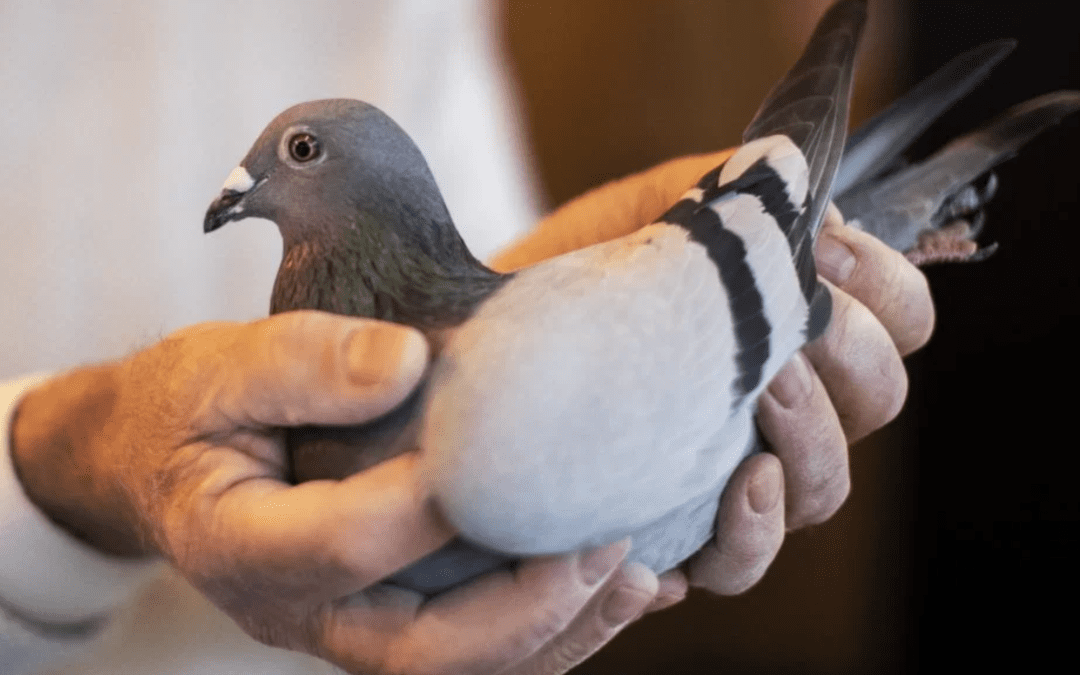
by Pigeon Patrol | Jan 19, 2023 | history of pigeons, MBCA, pet bird, Pigeon Control, Pigeon Droppings, Pigeon Patrol's Services, Pigeon Predators
BARRIE, ONT. — Joe Ferreira has been racing since 1975.
Not cars. Not horses. But pigeons.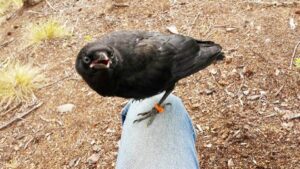
On a race day, Ferreira takes his pigeons to a clubhouse where their electronic tracking bands are scanned and driven to a starting line. Then, they race back home.
Just like human athletes, the pigeons train for a big race. Ferreira let’s his birds go free and sees if they come back.
He says he’s built bonds with all 67 of his birds.
“Sometimes the day of a race, I look at the weather. And if the weather looks a little weird, I say ‘I don’t wanna risk losing you.’ So I keep them home,” Ferreira said.
The sport that has been around for centuries but Ferreira says it faces a lot of misconceptions.
“If you took one of those wild (pigeons), took it two blocks from the house…you would never see it again,” Ferreira says. “Those pigeons give us a bad name.”
Ferreira admits the sport is struggling to maintain interest.
“Nowadays they got all these bylaws. They won’t allow pigeons here or there. So it’s kinda killing the support. Plus, the younger generation is too busy with their video games at home.”
Source
Pigeon Patrol Products & Services is the leading manufacturer and distributor or bird deterrent (control) products in Canada. Pigeon Patrol products have solved pest bird problems in industrial, commercial, and residential settings since 2000, by using safe and humane bird deterrents with only bird and animal friendly solutions. At Pigeon Patrol, we manufacture and offer a variety of bird deterrents, ranging from Ultra-flex Bird Spikes with UV protection, Bird Netting, 4-S Bird Gel and the best Ultrasonic and audible sound devices on the market today.
Voted Best Canadian wholesaler for Bird Deterrent products ten years in a row.
Contact us at 1 877-4-NO-BIRD,(604) 585-9279 or visit our website at www.pigeonpatrol.ca
Pigeon/Pigeon Patrol / Pigeons Roosing / Vancouver Pigeon Control / Bird Spikes / Bird Control / Bird Deterrent / PIgeon Deterrent / Surrey Pigeon Control / Pest / Seagull deterrent / Vancouver Pigeon Blog / Birds Inside Home / Pigeons in the cities / Ice Pigeons / What to do about pigeons / sparrows, Damage by Sparrows, How to Keep Raccoons Away, Why Are Raccoons Considered Pests / De-fence / Pigeon Nesting / Bird Droppings / Pigeon Dropping / woodpecker control / Professional Bird Control Company / Keep The Birds Away / Birds/rats/seagull/pigeon/woodpecker/dove/sparrow/pidgeon control/pidgeon problem/pidgeon control/flying rats/pigeon problems/ bird netting/bird gel/bird spray/bird nails/bird guard
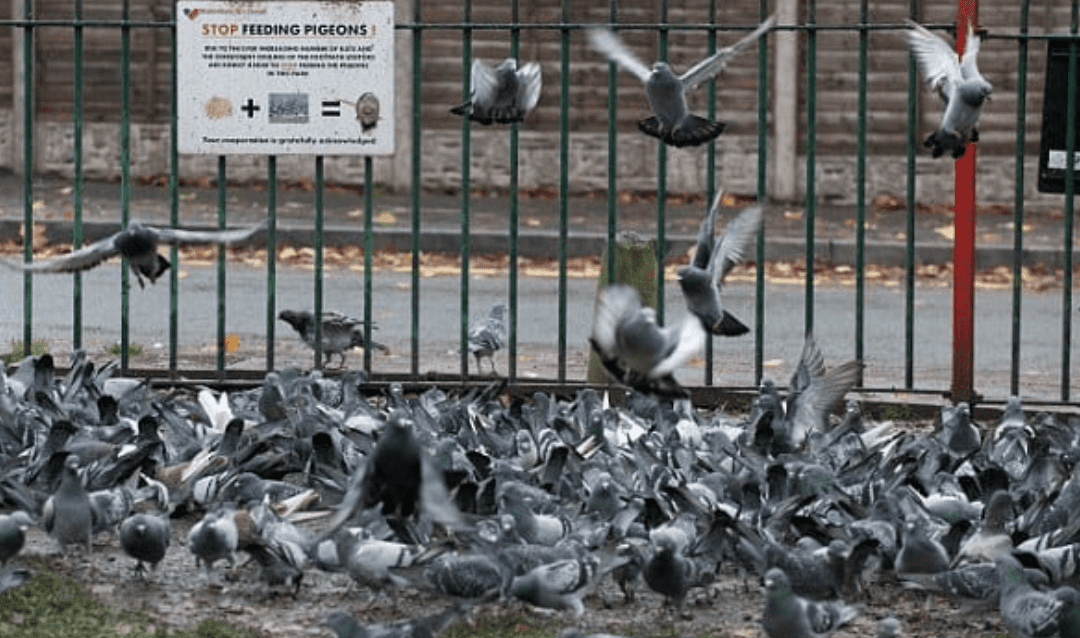
by Pigeon Patrol | Mar 29, 2022 | MBCA, pet bird, Pigeon Control, Pigeon Droppings, Pigeon Patrol's Services, Pigeon Predators
Why Control Birds?
- They can lead to large-scale pig feed losses
- They can spread human and animal disease and carry parasites, and
- They can damage property.
Feed Wastage
- Feed wastage through birds can be high, particularly on outdoor pig units.
- Birds can take large volumes of sow rolls, equating to high financial losses and make it difficult to estimate quantities being eaten by the sows themselves.
- On average, bird feed intake can be 24g per bird per day, rising to 50g per bird in a single feed when herring gulls are the main species; this feed loss can cost thousands of pounds over the course of a year, and
- Feed losses can impact on sow productivity and piglet viability.
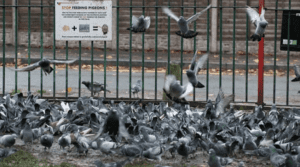
Disease
- Disease organisms spread by birds include: Brachyspira hyodysenteriae (swine dysentery) Salmonella spp., Escherichia coli, Campylobacter spp. and Listeria monocytogenes.
- Pigs are at risk of becoming infected with these organisms through poor standards of hygiene, after being in contact with droppings or if birds contaminate their food or water.
- High levels of birds on units can introduce new strains of Salmonella and re-circulate existing infections; this can result in more pigs carrying Salmonella at slaughter
- People can also be at risk of Salmonella and other infections through similar transmission methods.
Birds Most Likely to be Seen on Pig Units
- Gulls
- Crows
- Pigeons – particularly hard to eliminate
- Starlings – a particular problem during the winter
- Birds of prey – birds of prey will take young piglets and feed off dead piglets and afterbirth.
Bird Prevention
- Manage and prevent access to feed, especially feed wastage around mills, bins and feeders; if food is available, birds will always return.
- Prevent bird population build-up through practical on-farm deterrent measures such as screens; galvanised mesh screens can have a payback on saved feed losses of around 4.5 years (based on an 800-place finisher building).
- An armoury of acoustic and visual scarers will be needed to control birds as they can become habituated to ‘scaring’ mechanisms quickly, often returning to units after a few days.
- Altering the scaring mechanism every few days is the best form of prevention.
- Some birds will be more affected by certain scaring mechanisms than others so it may be necessary to use two per day and mix them up.
Options for Minimising Bird Populations
- Good feed management
- reduce waste and spills
- minimise fines from cobs
- use cobs if starlings are the main problem
- use pellets if gulls are the main problem
- Cost-effective feeding strategies
- Feed by the fenceline
- Reduce the length of the feed face
- Use ad lib feeders with covers and chains around
- Replace material/flexible feeder covers for metal ones
- Trough feeding
- Wet feeding
- Exclude birds from buildings using netting/mesh screens (keep well maintained)
- Apply plastic strips to arc fronts to exclude small birds from gaining access
- Nails on posts.
Options for Scaring Birds
- Acoustic scarers, e.g. gas bangers and distress call audio tapes; note these are effective in the short term but birds will reappear
- Material kites (tied to a weight)
- Decoy birds
- Hawk falconry flights
- Decoy birds
- Walking with an empty gun or stick of similar length behind the tractor at feeding.
By reducing the availability of feed to birds, a number of long-term benefits will be seen, including reduced direct livestock feed losses and therefore improved productivity and viability, less chance of disease transmission and a reduced need for conventional short-term bird control methods.
Targeting and designing cost-effective feeding strategies are therefore key in controlling birds, as well as a greater use of mechanical controls such as lids on feeders and barriers at feed stores. The main requirement for mechanical controls is effective maintenance of the screens used.
Controlling Birds
- Under the Wildlife and Countryside Act 1981, it is possible to control certain species of bird in the UK.
- Persons relying on this licence must be satisfied that non-lethal methods (see examples above) of resolving the problem are ineffective or impracticable.
- Keep records including dates of non-lethal methods applied, to assist licence applications.
- There are special licences for different risks.
- The licence (general) most likely to be required by pig producers is ‘To kill or take certain wild birds to prevent serious damage or disease’. This licence is granted to:
- Prevent serious damage to livestock, foodstuffs for livestock, crops, vegetables, fruit, growing timber, fisheries or inland waters.
- Prevent the spread of disease.
Source
Pigeon Patrol Products & Services is the leading manufacturer and distributor of bird deterrent (control) products in Canada. Pigeon Patrol products have solved pest bird problems in industrial, commercial, and residential settings since 2000, by using safe and humane bird deterrents with only bird and animal friendly solutions. At Pigeon Patrol, we manufacture and offer a variety of bird deterrents, ranging from Ultra-flex Bird Spikes with UV protection, Bird Netting, 4-S Bird Gel and the best Ultrasonic and audible sound devices on the market today.
Voted Best Canadian wholesaler for Bird Deterrent products ten years in a row.
Contact us at 1- 877– 4– NO-BIRD, (604) 585-9279 or visit our website at www.pigeonpatrol.ca
Pigeon/Pigeon Patrol / Pigeons Roosting / Vancouver Pigeon Control /Bird Spikes / Bird Control / Bird Deterrent / Pigeon Deterrent? Surrey Pigeon Control / Pest /Seagull deterrent / Vancouver Pigeon Blog / Birds Inside Home / Pigeons in the cities / Ice Pigeons/ What to do about pigeons/ sparrows , Damage by Sparrows, How To Keep Raccoons Away, Why Are Raccoons Considered Pests/ De-fence / Pigeon Nesting/ Bird Droppings / Pigeon Dropping/ woodpecker control/ Professional Bird Control Company/ Keep The Birds Away/ Birds/rats/ seagull/pigeon/woodpecker/ dove/sparrow/pidgeon control/pidgeon problem/ pidgeon control/flying rats/ pigeon Problems/ bird netting/bird gel/bird spray/bird nails/ bird guard
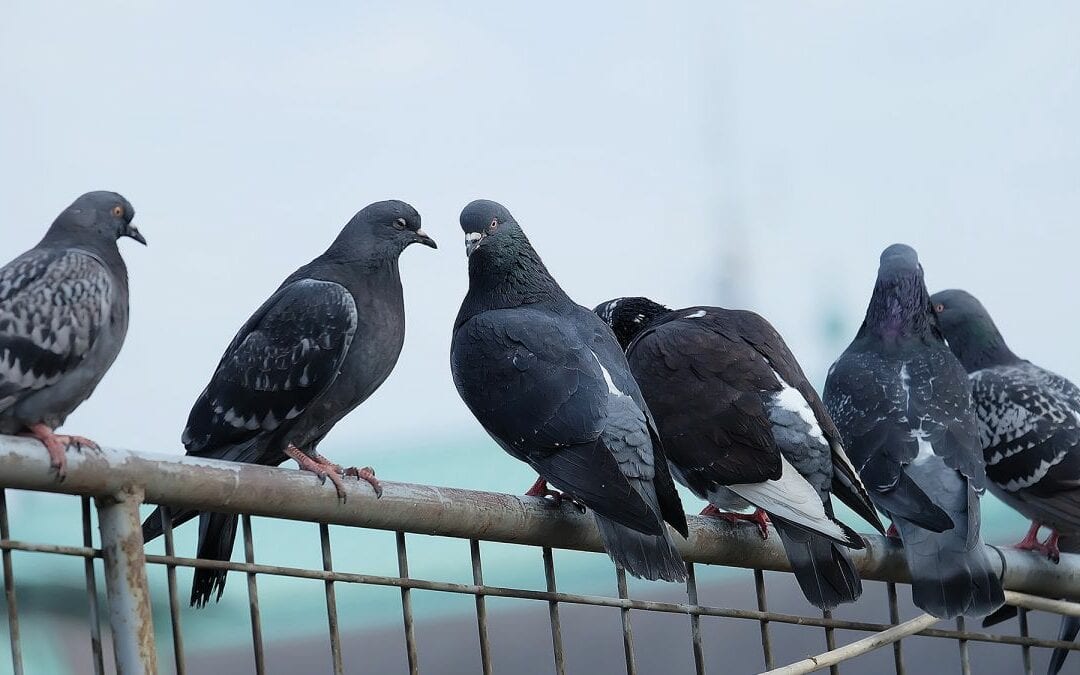
by Pigeon Patrol | Mar 29, 2022 | Columbidae, Doves, history of pigeons, MBCA, pet bird, Pigeon Control
The law
Most birds, nests and eggs are protected under law.
Some of these laws are provincial and some are federal. Depending on the type of bird, different rules apply.
In some cases, you need approval from the Ministry of Northern Development, Mines, Natural Resources and Forestry before you can remove or disturb a wild bird’s nest or eggs in a nest.
This includes:
- nests that birds are using (with or without eggs in them)
- nests of certain species that appear to have been abandoned or look out of use
In some cases, you may need other approvals (e.g., from the federal government in the case of migratory birds).
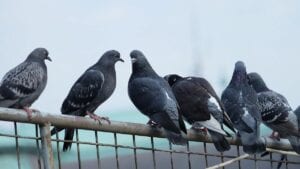
Source law
This is a summary of the provincial laws. You can find a complete set of provincial rules related to this activity in:
- Fish and Wildlife Conservation Act, 1997
- Ontario Regulation 665/98 (hunting)
- Endangered Species Act, 2007, O.Reg.242/08
Migratory birds
Certain rules apply to migratory birds, which are protected under the Migratory Birds Convention Act (a federal law).
You should contact Environment Canada for more information about the rules covering migratory birds.
Species at risk
Ontario’s Endangered Species Act also protects the nests and eggs of birds that are listed as endangered and threatened.
You need special permission to remove or disturb the nest of a threatened or endangered bird species. These species are listed on the Species at Risk in Ontario List.
Please contact your local Ministry of Northern Development, Mines, Natural Resources and Forestry District Office for more information.
No approval required
You do not need approval under the Fish and Wildlife Conservation Act, if you are:
- carrying out a renewable energy project under the Environmental Protection Act
- conducting maintenance on an electricity transmission or distribution line, or on a telecommunications line or broadcast tower where there is a threat to the function of the line or tower
- carrying out forest operations under an approved forest management plan
- damaging or removing the nests or eggs of:
- American crow
- brown-headed cowbird
- common grackle
- house sparrow
- red-winged blackbird
- European starling
Source
Pigeon Patrol Products & Services is the leading manufacturer and distributor of bird deterrent (control) products in Canada. Pigeon Patrol products have solved pest bird problems in industrial, commercial, and residential settings since 2000, by using safe and humane bird deterrents with only bird and animal friendly solutions. At Pigeon Patrol, we manufacture and offer a variety of bird deterrents, ranging from Ultra-flex Bird Spikes with UV protection, Bird Netting, 4-S Bird Gel and the best Ultrasonic and audible sound devices on the market today.
Voted Best Canadian wholesaler for Bird Deterrent products ten years in a row.
Contact us at 1- 877– 4– NO-BIRD, (604) 585-9279 or visit our website at www.pigeonpatrol.ca
Pigeon/Pigeon Patrol / Pigeons Roosting / Vancouver Pigeon Control /Bird Spikes / Bird Control / Bird Deterrent / Pigeon Deterrent? Surrey Pigeon Control / Pest /Seagull deterrent / Vancouver Pigeon Blog / Birds Inside Home / Pigeons in the cities / Ice Pigeons/ What to do about pigeons/ sparrows , Damage by Sparrows, How To Keep Raccoons Away, Why Are Raccoons Considered Pests/ De-fence / Pigeon Nesting/ Bird Droppings / Pigeon Dropping/ woodpecker control/ Professional Bird Control Company/ Keep The Birds Away/ Birds/rats/ seagull/pigeon/woodpecker/ dove/sparrow/pidgeon control/pidgeon problem/ pidgeon control/flying rats/ pigeon Problems/ bird netting/bird gel/bird spray/bird nails/ bird guard












